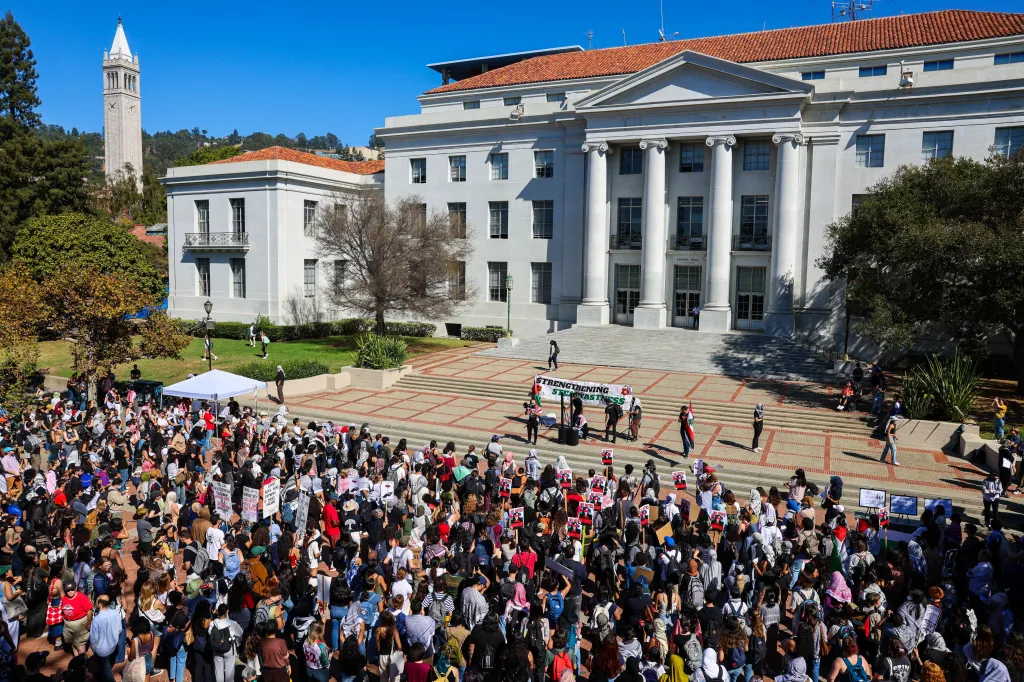
By Amy Dipierro
On top of the typical anxieties of the college application season, California’s high school class of 2025 had some unusual hurdles to clear.
First, there was the two-month delay in when the 2025-26 Free Application for Federal Student Aid (FAFSA) form was available to students and their parents. Then, devastating wildfires in the Los Angeles area that disrupted so many lives. And later, worries about student data privacy and immigration enforcement that could tear apart some families.
But this week, the California Student Aid Commission (CSAC) unveiled data suggesting many students hoping for college admission were not discouraged by those potentially daunting circumstances. Public high school students’ applications for state and federal aid rose 11% year to year, the commission reported, a partial recovery following the tumultuous and delayed rollout of the 2024-25 FAFSA. That meant an extra 33,300 applications for a total of nearly 340,000 statewide.
The Camino Nuevo Charter Academy in Los Angeles is among the schools that saw an increase in applications. “It’s the highest rate of completion that we’ve had in the last at least five to six years,” said Elizabeth Nicho, Camino Nuevo’s director of college and career success. “We had 99% of our students complete a FAFSA or (California) Dream Act application, which is really good.”
College access advocates said the turnaround could have to do with a 2021 state law that requires schools and districts to strongly encourage high school seniors to apply for state or federal financial aid, although students can also opt out. They also credit targeted regional outreach to counties with lagging application rates and consistent messaging on delicate matters related to immigration status.
Daisy Gonzales, the executive director of the California Student Aid Commission, said in a press release that the financial aid trends show that families “need financial aid to make college affordable.”
“With more high school seniors applying for financial aid, we can expect our higher education segments to serve more students,” she said.
The commission did not detail how many of those students actually enrolled in a college or university, or the amounts of aid they received.
Still, over a longer time frame, California has room for improvement with the FAFSA, which generally is the gateway for such state aid as Cal Grants and federal aid such as Pell Grants, subsidized loans and work-study awards. Recent high school graduates filed almost 13,900 fewer applications for federal aid by the September 2025 state financial aid deadline than they did by the same deadline in September 2023, according to California Student Aid Commission data.
And it’s important to note that the 11% increase is not the full picture of students applying for financial aid, since it doesn’t include returning college students or students who don’t go directly from high school to college. Marcos Montes, policy director for the Southern California College Attainment Network, said further follow-up could be needed with prospective students who still haven’t enrolled in college because of FAFSA glitches dating back to 2023.
“We’re still not 100% sure we’ve been able to get some of those students back and connect them on a path to post-secondary education,” Montes said.
Those caveats aside, this year’s financial aid data suggest a more positive than expected outlook for a group of students that advocates worried might sit out this financial aid cycle. Mixed immigration status families — such as those in which a student is a U.S. citizen but one or more of their parents are not — were thought vulnerable because of uncertainty about whether financial aid data could be used for immigration enforcement purposes.
Despite such predictions, data from CSAC shows 69,000 high school seniors from mixed-status families filed a FAFSA by the state financial aid deadline this month, up from almost 64,700 in September 2023.
Separately, the commission reported that fewer recent high school graduates this past year filed a California Dream Act Application (CADAA) compared to the last two years, excluding students from mixed-status families. The CADAA is typically used by undocumented students, but has more recently been opened to mixed-status students, too. It gives students potential access to state aid, but not federal Pell Grants and subsidized loans.
Joshua Hagen, vice president of policy and advocacy at the Campaign for College Opportunity, said that “clear and consistent information” from the student aid commission and other student advocates may have helped mixed-status families to understand the “calculated risks” and potential financial upside to seeking state or federal aid.
The experience at schools like Camino Nuevo may also hold a clue to what’s behind California’s somewhat surprising turnaround. The charter school system in the Westlake area of Los Angeles, which got early access to the 2025-26 FAFSA through a testing program this fall, took special care to ensure that families with mixed immigration statuses had the latest guidance on their financial aid options, Nicho said.
“We were constantly checking with our counselors just to get a sense of how our families were feeling,” Nicho said.
Eric Blanco, a school counselor at Ernest Righetti High School in Santa Maria, said he suspects some families most concerned about immigration enforcement likely didn’t attend school functions about the financial aid process. But he and his colleagues still tried to make sure families knew how much money their children would likely be eligible to receive if they chose to apply for financial aid.
“We did feel like some of our events were not as well attended because there was that little bit of anxiety,” said Blanco, who is the former president of the California Association of School Counselors. “We were stressing to families, ‘Please don’t worry about that. We are going to provide the services that you need.’”
The next financial aid cycle opens Oct. 1 for seniors expected to graduate next spring. The priority deadline for state aid is March 2, 2026, and community college students should apply by Sept. 2, 2026. Under the traditional application timeline, colleges send students financial aid packages in the spring in time for students to decide which college to attend in the fall.
Ryan Alcantara, the interim president and CEO of the Parent Institute for Quality Education, said his organization is trying to anticipate how best to teach parents about college and career opportunities for their children this school year.
Last school year, he noted, immigration raids escalated in California communities in the spring, rather than during the heart of the financial aid application season as is happening now. To address concerns, Alcantara’s goal is “making sure parents have information and resources and are able to make informed decisions,” he said, “because there can be a chilling effect for a variety of different reasons.”



